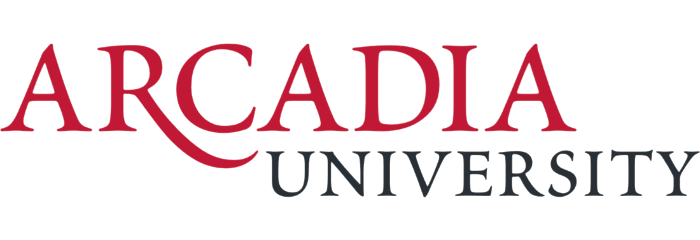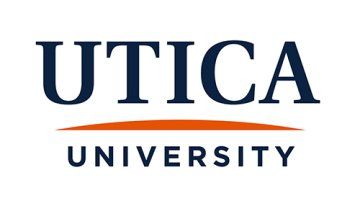Best Online Doctor of Physical Therapy Programs
Est. Time: 12 mins
Explore online DPT programs, learn about cost and accreditation, and start your journey toward a doctorate in physical therapy today.
- Jump To:
- Best Programs
- |
- FAQs
- |
- Cost
- |
- Resources
- |
- Salary/Pay

As a physical therapist, you’ll spend your days literally helping people get back on their feet after an injury or accident. How fulfilling is that? As an essential member of a healthcare team, you owe it to your patients – and yourself – to offer the highest quality care. The first step to high-quality care is high-quality training. So, naturally, you want to earn your doctor of physical therapy degree from a top program.
But maybe you’ve put down roots and don’t want to move to earn your DPT. Maybe you’re worried about balancing your studies with all the rest of your responsibilities. Or maybe you focus better in a quiet environment. Earning your DPT online is one way to address each of these concerns. The world of online learning can be intimidating, but it offers unparalleled affordability and flexibility, and you’ll be able to pick from one of the many excellent online DPT programs across the nation. We’ve put together this guide to demystify the world of online DPT degrees. Walk with us while we tell you all about top programs, answer common questions, and learn about what a DPT can do for your career.
Top Online DPT Programs
When it comes to your education, you want the best. And you deserve it too. With so many online DPT programs out there, it can be tricky to separate the champs from the chumps. Fortunately, we can help with that. We’ve been busy researching all the DPT programs the internet has to offer to see who stands out. We spotlight schools according to their quality, affordability, flexibility, student support, and other unique features. Keep reading to learn about our top picks.
Arcadia University

The Hybrid Doctor of Physical Therapy program at Arcadia University stands out for its innovative course design. Rather than teaching concepts and techniques in a vacuum, Arcadia’s curriculum centers around 20 unique patient-based courses that teach students how to apply their knowledge holistically to a series of increasingly complex physical therapy cases. Each course builds on the knowledge you’ve already earned and prepares you to apply your coursework to real-world care situations.
Arcadia’s DPT program also stands out for its efficiency. Here, you can earn your DPT in as few as 26 months. This accelerated format means you’ll be licensed and ready to practice in no time. Because the accelerated format can be intense, you’ll be able to demonstrate to future employers that you’re ready to deal with the pressures of a fast-paced work environment.
It is important to know that Arcadia’s DPT program is a hybrid format. So, although you’ll do a significant chunk of your coursework online, you should be prepared to visit campus regularly. Attending Arcadia means you’ll get to live and work in beautiful, bustling Glenside, PA for the duration of your studies.
USC Online

The Online Doctor of Physical Therapy at The University of Southern California is designed to prepare future physical therapists nationwide. The program is billed as a hybrid program since clinicals must be completed in-person. However, USC Online works with non-local students to arrange practicum hours in their area. USC’s systems-based curriculum prepares students to integrate different knowledge sources into their patient care. Specifically, the DPT at USC trains students to account for patient needs, current research, and their own professional ability when developing care plans. Since this approach can be applied to any case at any time, USC’s approach ensures that you will be ready to handle patients that under your care long after graduation.
In order to make their DPT program accessible to as many students as possible, the school does not require GRE scores as part of the application and offers generous financial aid opportunities.
Utica University

If you’re a licensed physical therapist trying to keep up with new research and innovations in the field, the Post-Professional Doctor of Physical Therapy Online Degree should be at the top of your list of potential programs. Utica’s curriculum model places immense value on the experience you’ve earned during your work and earlier education. Because the program is designed specifically for licensed physical therapists with a BS or MS, you won’t have to waste time and money re-doing coursework or reviewing the basics. Rather, you’ll benefit from an accelerated 16 month format that fills in the gaps and builds on what you already know.
Because DPT students arrive with significant work experience in the field, Utica recognizes that their students also arrive with specific career goals in mind. To this end, Utica helps students design unique clinical experiences that relate directly to their post-graduation plans and can be completed close to home.
FAQs About Online Doctor of Physical Therapy Programs
Pursuing your DPT is a big step forward in your career. And you need to be prepared for what is to come. Having questions is normal, it means you are doing your research. To help expedite that research, we’ve gone ahead and answered some of the most common questions future DPTs have about online programs. Keep reading to learn the answers to your burning questions and pick up some hot tips on the process of earning your DPT.
What are the different types of online DPT programs?
Online DPT programs come in a few different forms to service the varying needs of aspiring professionals. Each form achieves the same learning objectives in the long run, but they go about it differently to accommodate a range of educational backgrounds. Here’s what you need to know.
- Standard DPT Programs:
Similar to doctorates in other fields, these degree require some familiarity with the discipline and some formal academic training that meets prerequisites (a bachelor’s or master’s degree depending on the program). Some schools may also call for relevant work experience or active licensure. This is a good option for working professionals and those already placed in clinical settings. - B.S./DPT Programs:
Early-stage students and those with little or no background in physical therapy will find this option more accommodating. These programs take longer (6 years on average) but allow candidates to earn both a relevant bachelor’s degree and a doctor of physical therapy concurrently. They work to build clinical skills and technical knowledge from the ground up, offering a comprehensive experience designed to develop specialized expertise leading to full licensure.
Common Specializations
- Pediatrics:
Students with this specialization focus on physical therapy procedures tailored for infants, children, and youth. It looks at common conditions or disorders that inhibit normal growth and development. Candidates learn to identify and address issues like autism, cystic fibrosis, and cerebral palsy through family-centered care practices. - Sports Performance:
This specialization develops the technical skills needed to diagnose and treat injuries commonly associated athletic activities. These include concussions, ligament tears, and joint injuries. It also builds additional expertise in muscle strength, speed conditioning, agility, and other areas designed to improve overall performance. - Geriatrics:
Physical therapists with this expertise help elders achieve and maintain a healthy, independent lifestyle. They treat chronic conditions such as arthritis and osteoporosis specific to aging populations. They also help patients recover from procedures like joint replacement through coordinated rehabilitation efforts. - Orthopedics:
One of the more prominent areas of specialization, orthopedics treats injuries and conditions related to the musculoskeletal system. Because it focuses on ligaments, muscles, and bones, it sometimes overlaps with geriatrics or sports performance. Professionals with this expertise help patients recover from surgery and develop individualized treatment plans that support rehabilitation. - Cardiovascular & Pulmonary:
This concentration develops expertise in physical therapy efforts that help people manage long-term heart and lung issues. It looks at rehabilitation exercises necessary following open-heart surgery or cardiac arrest. Physical therapists in this area work to build patient endurance, mitigate stress, and manage chronic conditions.
What do you learn in an online DPT program?
Every school uses its own unique approach to train physical therapists and online DPT candidates. Each program will add its own flair, but at the end of the day most share common requirements with similar objectives, course topics, and core competencies. These include technical knowledge of human anatomy and physiology, and hard skills in range of motion activities, exercise techniques, and evidence-based practice. Along the way, students will also satisfy the following learning outcomes:
- Patient-centered care:
As in other healthcare professions, DPT graduates will learn to improve therapeutic outcomes by providing quality care and developing treatment plans in conversation with patients and their families. - Clinical reasoning:
Aspiring physical therapists will learn to exercise clear-sighted clinical reasoning in collecting data, communicating with patients, testing hypotheses, determining diagnoses, and evaluating treatment plans. - Scientific inquiry:
Students will learn to rely upon proven scientific principles and healthcare foundations throughout their work. This includes evidence-based practice and competency in the research methodologies specific to medicine and therapeutic care. - Compliance & professionalism:
DPT candidates will also learn to conduct themselves with the highest degree of professional skill. They will adhere to a clear code of professional ethics and will be compliant with all legal rules and regulations specific to the field. - Preparation for licensure:
Finally, all DPT graduates stand fully prepared to successfully pass the National Physical Therapy Examination. This exam must be completed before aspiring professionals can obtain licensure and certification.
Common Courses
- Physical Therapy Foundations
This course introduces students to the fundamentals of physical therapy and patient-centered care. It covers practices like vital sign assessment, assistive device placement, and psychomotor skill evaluation. A prerequisite for most other courses, the class also builds basic skills in range of motion exercises, evidence-based practice, and patient interviewing techniques. - Human Anatomy and Physiology
Students in this class develop working knowledge of gross anatomy and pathophysiology. It includes focused lab components designed to familiarize aspiring physical therapists with the main software and digital imaging tools used in professional practice. Potential topics include joint structure, embryology, and the cellular system. The course also looks at physiological principles that affect human movement throughout the lifespan. - Evidence-Based Practice
This class offers an overview of the main principles, research methodologies, and outcome assessments used in healthcare and physical therapy. Students learn how scientific inquiry translates into clinical contexts and how to gather pertinent peer-reviewed research sources. The course also looks at how to assess both research sources and evidence gathered during practice or evaluation. - Advanced Therapeutic Intervention
Aspiring professionals in this course build on previous foundations to develop proven strategies and techniques for physical therapy practice. Students model these elements in lab settings and work to hone their diagnostic skills through hands-on simulations. Topics include exercise therapy and manual therapy, mobilization, motor control, and vestibular treatments. - Physical Therapy Capstone
This culminating component gives candidates the opportunity to integrate knowledge acquired in didactic courses with the practical skills obtained through clinicals or fieldwork. It offers a comprehensive assessment of progress and gained knowledge, and prepares students for the national licensure exam. In many cases it includes written and oral elements designed to measure learning outcomes.
What do you learn in an online DPT program?
Every school uses its own unique approach to train physical therapists and online DPT candidates. Each program will add its own flair, but at the end of the day most share common requirements with similar objectives, course topics, and core competencies. These include technical knowledge of human anatomy and physiology, and hard skills in range of motion activities, exercise techniques, and evidence-based practice. Along the way, students will also satisfy the following learning outcomes:
Can you earn an DPT degree completely online?
Yes and no. When it comes to online healthcare degrees, the phrase “100% online” can be a little misleading. When a DPT program says it is fully online, it means you can complete all your didactic coursework remotely. But, in-person clinical experience is an essential component of any quality DPT program. And there’s really no substitute for face-to-face practice.
So, as you’re researching programs one of your first questions should be “How does this school facilitate clinicals?” Different schools have different clinical options to accommodate the needs of different students. Some schools require students to complete clinicals on-campus, meaning you’ll need to live nearby. More commonly, online DPT programs work with students to find a provider close to home who can supervise their clinicals. This gives students the flexibility to enroll in a program that is far from home without moving. In some cases, you may be able to apply your earlier experience toward your DPT if you are already working in the field.
How long does it take to earn a DPT degree online?
Timeframes for completion fluctuate quite a bit depending on program specifics and individual circumstances. Most online DPT programs are designed for completion in 3 years or less, but allow some leeway for working professionals and part-time students. If you already work in a physical therapy setting, you may be able to integrate that experience into your clinical internship, potentially expediting your path to completion in some cases. If you don’t, many programs offer accelerated options, especially for coursework. This can also reduce your time in school but maybe a bit more expensive depending on tuition rates and additional fees.
How much does an online DPT program cost?
Tuition rates vary depending on the type of school, available funding, and program length. Public schools tend to be less expensive than private institutions, especially if you attend a program within your state of residence. This rule holds true for both online and in-person programs.
Longer programs are generally more expensive and while scholarships can help offset the costs, they aren’t always guaranteed. Below are three examples of online DPT programs to give you a sense of current rates.

Physical Therapy
(Transitional DPT)
Total Credits: 24
$739/credit (in-state);
$1,105 (out-of-state)
How do I get into an online DPT program?
Most online DPT programs follow a similar admissions process. Specific requirements may differ depending on academic background and professional experience. In general, applicants should be prepared to provide the following items:
- Official transcripts for all previous academic work indicating a competitive GPA
- A current professional resume or CV
- Recent GRE scores and TOEFL results (if applicable)
- At least two recommendation letters from individuals like former employers or teachers who can assess your readiness for study
- A written personal statement that discusses your academic background and future career goals (some schools may also require responses to essay questions)
- Relevant work experience (optional in some cases)
- Course prerequisites in science or math (also optional in some cases)
Paying for Your Doctor of Physical Therapy Degree
It’s important to secure solid funding before beginning a program at this level. Financing your online DPT program may seem daunting, but financial aid options do exist if you know where to look and how to take full advantage of them. Here are three options to help you begin your search.
1
These are generally the best and most effective form of financial aid. Scholarships and grants are need or merit-based awards that don’t need to be repaid after graduation. Many businesses and nonprofit organizations offer them, as do professional associations. Check out our scholarship guide for more information.
2
Student loans are also a viable option, but unlike scholarships they accrue interest over time and must be repaid eventually. Most students receive various type of federal loans, but private alternatives also exist. Our student loan handbook looks at the application process and how to take full advantage of these opportunities.
3
Most schools with online DPT programs will extend additional financial aid options to entering students. These include fellowships and assistantships, internships, and work study opportunities. Fellowships are the most prominent form and generally involve some sort of service or research component in exchange for reduced tuition (work study placements work similarly). Most programs widely publicize these opportunities but if they don’t, contact the school’s financial aid office to learn more.
Accreditation Standards for Online Doctor of Physical Therapy Degree Programs
Accreditation ensures that schools and programs meet acceptable standards of excellence. It acts as a quality assurance measure and generally comes in three different forms.
The first two forms are institutional in nature and apply to the school at large. Private, nonprofit universities and public colleges typically receive regional accreditation, the most popular and prestigious form. This credential is granted by independent bodies recognized by the U.S. Department of Education or the Council for Higher Education Accreditation. National accreditation works similarly and is normally reserved for technical, vocational, or for-profit institutions.
Programmatic accreditation is the final form. It offers additional backing specific to certain disciplines. Programmatic accreditation supplements but does not replace institutional accreditation. Most online DPT programs are accredited by the Commission on Accreditation in Physical Therapy Education.
Getting Your Professional License & Certification After Your Online DPT Program
Independent boards oversee the licensure process for physical therapists and requirements depend on your state of residence. The Federation of State Boards of Physical Therapy (FSBPT) maintains a useful directory of these boards. At minimum, every state requires that you complete the National Physical Therapy Exam before you can begin practice. The exam is administered by the FSBPT, which also provides handy study guides and practice tests. Ready to start prepping? Learn how to ace the NPTE with study strategies and expert advice.
There are a ton of additional certifications out there above and beyond the national exam. These credentials aren’t required, but they do demonstrate additional skill. Obtaining one or two qualifies you as a specialist with broader job responsibilities and potential for increased earning power. The American Board of Physical Therapy Specialties keeps a database of available certifications.
Career and Salary Outlook
| Area ↕ | 10th Percentile ↕ | Median ↕ | 90th Percentile ↕ |
|---|---|---|---|
| U.S. | $72,260 | $99,710 | $130,870 |
| Alabama | $63,670 | $96,700 | $131,700 |
| Alaska | $83,890 | $104,610 | $131,100 |
| Arizona | $76,670 | $98,510 | $125,740 |
| Arkansas | $65,040 | $93,880 | $124,800 |
| California | $76,990 | $115,550 | $154,170 |
| Colorado | $71,110 | $97,610 | $129,680 |
| Connecticut | $76,230 | $103,280 | $130,450 |
| Delaware | $80,650 | $102,470 | $131,560 |
| Florida | $56,470 | $96,970 | $126,780 |
| Georgia | $74,910 | $99,890 | $125,590 |
| Hawaii | $83,670 | $101,780 | $125,520 |
| Idaho | $72,380 | $93,100 | $113,360 |
| Illinois | $79,800 | $102,820 | $130,760 |
| Indiana | $66,760 | $98,620 | $119,950 |
| Iowa | $75,360 | $92,200 | $111,630 |
| Kansas | $65,560 | $95,790 | $121,780 |
| Kentucky | $45,100 | $88,640 | $120,190 |
| Louisiana | $61,930 | $98,920 | $131,680 |
| Maine | $75,370 | $90,590 | $109,820 |
| Maryland | $79,670 | $102,020 | $130,220 |
| Massachusetts | $75,010 | $100,470 | $124,250 |
| Michigan | $74,550 | $99,220 | $117,740 |
| Minnesota | $79,270 | $96,560 | $112,370 |
| Mississippi | $66,470 | $96,430 | $122,860 |
| Missouri | $63,240 | $92,140 | $115,870 |
| Montana | $65,590 | $85,020 | $107,420 |
| Nebraska | $67,440 | $92,680 | $109,880 |
| Nevada | $64,470 | $104,000 | $179,550 |
| New Hampshire | $77,960 | $96,760 | $112,690 |
| New Jersey | $80,850 | $104,010 | $133,790 |
| New Mexico | $58,650 | $100,450 | $134,320 |
| New York | $63,910 | $97,780 | $131,520 |
| North Carolina | $72,560 | $94,830 | $118,320 |
| North Dakota | $68,460 | $88,250 | $108,680 |
| Ohio | $73,860 | $98,440 | $127,000 |
| Oklahoma | $66,340 | $98,090 | $122,030 |
| Oregon | $76,960 | $101,000 | $127,300 |
| Pennsylvania | $73,200 | $100,240 | $124,950 |
| Rhode Island | $74,980 | $95,490 | $131,010 |
| South Carolina | $65,820 | $97,280 | $118,660 |
| South Dakota | $69,560 | $89,290 | $103,480 |
| Tennessee | $76,570 | $98,690 | $118,390 |
| Texas | $72,830 | $104,060 | $137,350 |
| Utah | $59,790 | $95,000 | $135,780 |
| Vermont | $73,920 | $90,860 | $112,260 |
| Virginia | $72,550 | $96,780 | $129,840 |
| Washington | $75,340 | $100,950 | $131,130 |
| West Virginia | $64,010 | $96,210 | $124,310 |
| Wisconsin | $75,820 | $97,670 | $118,250 |
| Wyoming | $67,400 | $88,290 | $121,630 |
Source: Bureau of Labor Statistics
Data based on national numbers, not school-specific information.
| Area ↕ | Curr. Jobs ↕ | Proj. Jobs ↕ | New Jobs ↕ | Growth % ↕ | Avg. Ann. Openings ↕ |
|---|---|---|---|---|---|
| United States | 246,800 | 284,100 | 37,300 | 15.10% | 13,900 |
| Alabama | 2,710 | 3,150 | 440 | 16.20% | 160 |
| Alaska | 620 | 680 | 60 | 9.70% | 30 |
| Arizona | 4,680 | 6,130 | 1,450 | 31.00% | 350 |
| Arkansas | 2,040 | 2,410 | 370 | 18.10% | 120 |
| California | 24,300 | 30,900 | 6,600 | 27.20% | 1,720 |
| Colorado | 5,470 | 6,810 | 1,340 | 24.50% | 370 |
| Connecticut | 3,750 | 4,190 | 440 | 11.70% | 200 |
| Delaware | 1,010 | 1,240 | 230 | 22.80% | 70 |
| District of Columbia | 630 | 720 | 90 | 14.30% | 30 |
| Florida | 15,840 | 19,840 | 4,000 | 25.30% | 1,090 |
| Georgia | 5,950 | 7,120 | 1,170 | 19.70% | 370 |
| Idaho | 1,790 | 2,330 | 540 | 30.20% | 130 |
| Illinois | 9,960 | 10,950 | 990 | 9.90% | 500 |
| Indiana | 4,420 | 5,040 | 620 | 14.00% | 240 |
| Iowa | 2,320 | 2,830 | 510 | 22.00% | 150 |
| Kansas | 2,390 | 2,690 | 300 | 12.60% | 130 |
| Kentucky | 3,690 | 4,300 | 610 | 16.50% | 220 |
| Louisiana | 3,170 | 3,640 | 470 | 14.80% | 180 |
| Maine | 1,580 | 1,670 | 90 | 5.70% | 70 |
| Maryland | 4,210 | 4,920 | 710 | 16.90% | 250 |
| Massachusetts | 2,470 | 2,840 | 370 | 15.00% | 140 |
| Michigan | 7,350 | 8,300 | 950 | 12.90% | 400 |
| Minnesota | 4,410 | 4,890 | 480 | 10.90% | 230 |
| Mississippi | 1,930 | 2,200 | 270 | 14.00% | 110 |
| Missouri | 5,890 | 7,090 | 1,200 | 20.40% | 370 |
| Montana | 1,300 | 1,640 | 340 | 26.20% | 90 |
| Nebraska | 1,900 | 2,220 | 320 | 16.80% | 110 |
| Nevada | 1,620 | 1,970 | 350 | 21.60% | 100 |
| New Hampshire | 1,620 | 1,910 | 290 | 17.90% | 100 |
| New Jersey | 7,850 | 9,350 | 1,500 | 19.10% | 480 |
| New Mexico | 1,470 | 1,930 | 460 | 31.30% | 110 |
| New York | 19,190 | 24,830 | 5,640 | 29.40% | 560 |
| North Carolina | 7,110 | 8,820 | 1,710 | 24.10% | 480 |
| North Dakota | 870 | 1,010 | 140 | 16.10% | 50 |
| Ohio | 8,360 | 9,170 | 810 | 9.70% | 420 |
| Oklahoma | 2,420 | 2,720 | 300 | 12.40% | 130 |
| Oregon | 3,110 | 3,850 | 740 | 23.80% | 210 |
| Pennsylvania | 12,280 | 14,130 | 1,850 | 15.10% | 690 |
| Rhode Island | 1,110 | 1,250 | 140 | 12.60% | 60 |
| South Carolina | 3,290 | 4,060 | 770 | 23.40% | 220 |
| South Dakota | 970 | 1,150 | 180 | 18.60% | 60 |
| Tennessee | 4,130 | 5,120 | 990 | 24.00% | 280 |
| Texas | 17,070 | 20,810 | 3,740 | 21.90% | 1,100 |
| Utah | 2,250 | 3,370 | 1,120 | 49.80% | 220 |
| Vermont | 780 | 890 | 110 | 14.10% | 40 |
| Virgin Islands | 40 | 40 | – | 0.00% | – |
| Virginia | 6,880 | 8,110 | 1,230 | 17.90% | 410 |
| Washington | 7,070 | 9,040 | 1,970 | 27.90% | 710 |
| West Virginia | 1,260 | 1,420 | 160 | 12.70% | 70 |
| Wisconsin | 5,260 | 5,930 | 670 | 12.70% | 280 |
| Wyoming | 580 | 690 | 110 | 19.00% | 40 |
Source: Projections Central
Data based on national numbers, not school-specific information.
Continuing Education & Related Degrees
This section looks at continuing education opportunities and related degrees that some DPT-holders might want to pursue. Continuing education is an important component for all healthcare practitioners, including physical therapists. Likewise, related courses of study can help current DPTs hone their skills and expand their job prospects in new areas.
Continuing Education
All physical therapists must complete some form of regular continuing education in order renew their license. Specific requirements vary by state and licensing board, but essentially this means that your education does not end with graduation or initial licensure.
You will still need to update your skills and technical knowledge by completing new competency exams, attending conferences and events, or participating in workshops. The same board that administered your initial licensure will stipulate a streamlined process for maintaining an active license. The FSBPT also offers its own modules to help keep you up to date.
Related Degrees to Consider
- Doctor of Occupational TherapyThis degree builds upon the DPT knowledge base by preparing professionals for practice as occupational therapists. This role is similar to physical therapy but instead focuses on helping impaired people develop and maintain everyday activities associated with personal hygiene, food intake, and functional mobility.
- PhD in Rehabilitation ScienceThis credential can expand your career prospects beyond clinical practice. It provides an academic-oriented course of study that prepares candidates for postsecondary teaching and research. Degree-holders train aspiring healthcare professionals like physical therapists and often produce new scholarly work that expands the boundaries of the field.
- Doctor of Podiatric MedicineThis degree uses some of the same principles as a DPT and focuses on issues and ailments of the lower extremities, mainly the feet and ankles. Professionals with this credential help people overcome challenges using physical therapy-related techniques. They also offer surgical intervention when necessary.
FIND PROGRAMS NEAR YOU:
Resources for DPT Students & Professionals
Online networks and communities are not the only virtual sources of information for medical assistant students and professionals. There are plenty of other online media resources – books, magazines, podcasts, etc. – providing the most current information and advice for medical assistants. And the majority of these resources can be accessed free-of-charge. Here are six examples:
American Academy of Orthopedic Manual Physical Therapists
American Board of Physical Therapy Specialties
American Physical Therapy Association
Commission on Accreditation in Physical Therapy Education
National Athletic Trainer’s Association
National Strength and Conditioning Association




